A Bolder Humboldt
Making Towns that Work: Ambitious Placemaking in Rural America with A Bolder Humboldt
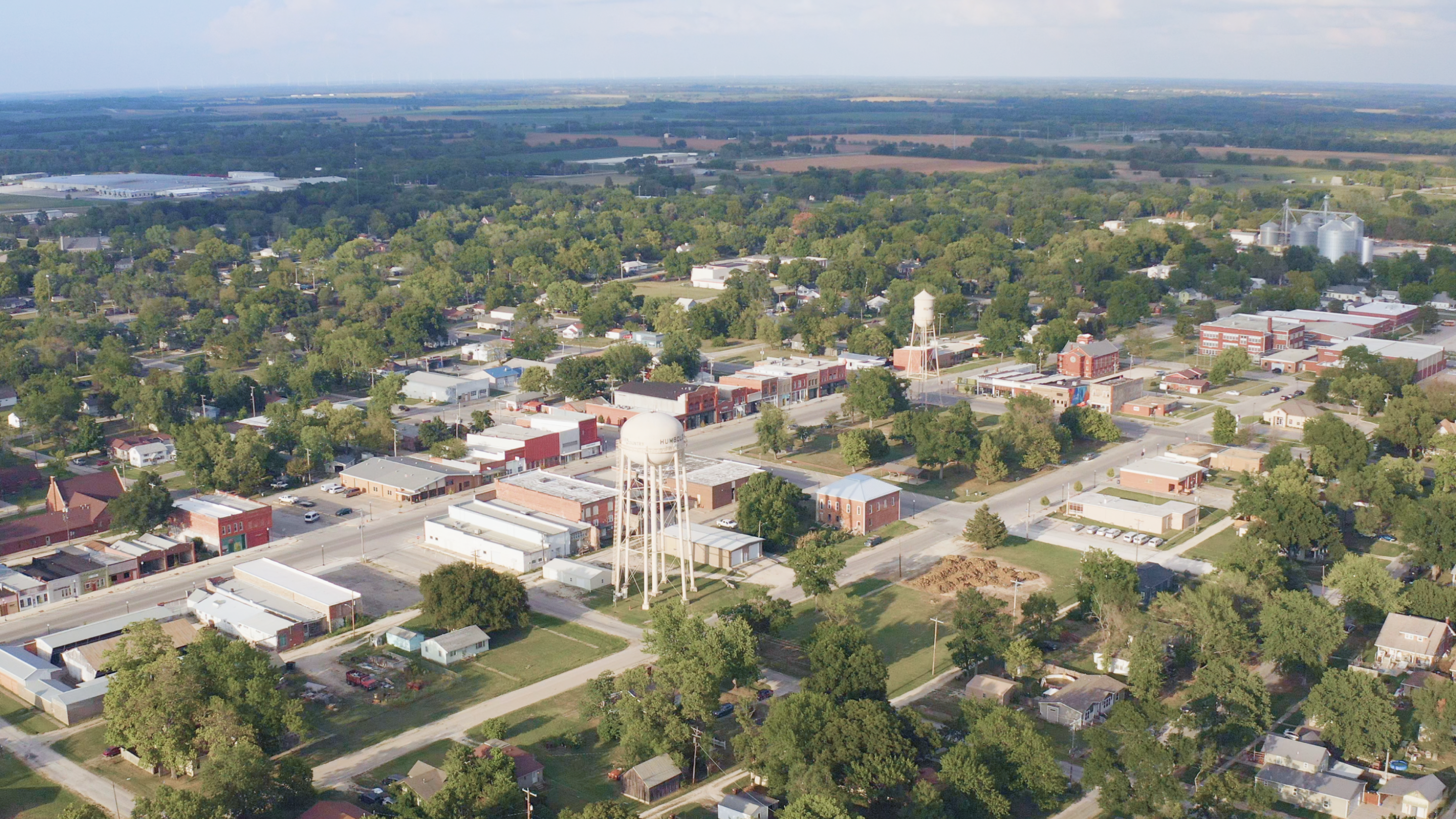
Brand Strategy
Visual Identity Design
Wayfinding/Signage
Planning
Fundraising
Growing Population
Increasing population, housing development, people moving to town and people moving back.
International Attention
Recognition in the New York Times and syndicated papers all over the country.
Significant Economic Development
20+ businesses and 50+ new jobs in town
Cultural Evolution
Creating a sense of pride of place and a belief in the community that a return is possible.
Career Training
Building programs to train the next generation of workers
A Noted Travel Destination
Developed destinations and created stories that helped bring many new people to town.
Making Towns that Work: Ambitious Placemaking in Rural America with A Bolder Humboldt

The last 40 years hasn’t been kind to small towns across the US. Almost every aspect of life in rural areas has been under assault. Businesses are closing or have long closed, main streets have been abandoned and buildings are falling apart, jobs are increasingly scarce, housing stock is dwindling, and worst of all young people are giving up and not coming back.
While that’s a rather bleak way to start a case study, there is hope! In the small town of Humboldt Kansas there has been flurry of activity in the opposite direction; a group of folks that have grabbed the reins of community development, determined to make their town work.
Humboldt’s revitalization has taken the form of a new brewery, hotels, a campground, bars, restaurants, a candy shop, a music venue, a garden school, a bookshop, ice cream shop a shave ice stand, parks, trails, signage, and more at an accelerating pace.


This project is now known as A Bolder Humboldt, and started out in 2016 with the simple statement: “let’s make the town we want to live in” but while the words were easy, the path seemed unlikely. Conventional wisdom held that the challenges were almost insurmountable; every business that left, every house torn down, and every civic organization that was aging out had all happened for reasons–and none of those reasons had changed.
Kei Partner, Paul Cloutier was one of those people–also a partner with ABH–working to navigate the massive challenge of redesigning a community. This near life-long effort gives us a front row seat to this work and a seat at the table to help contribute.

Let’s make the town we want to live in

There has–for much of the second half of the 20th century until now–been a familiar model for town revitalization that is often led by municipalities and main street orgs, that takes a top down, incentive-driven approach. The problem with this has always been a disconnect from strategy and execution; the money people commission outsiders to have ideas, and then tell locals to execute. The first innovation that we settled on with A Bolder Humboldt was to flatten that strategy and execution into a process that can best be described as "Strategic Action"; working in such a way that would allow us to build and assess, build and assess. This allowed us to learn what was necessary as we went and adjust based on what was working. Taking lessons from lean startups and applying it to buildings and towns has been a real accelerant to town making.
It was this initial effort of building small that began to erode the skepticism of what was possible. Seeing something done was like a spark in dry tinder, and a small fire of enthusiasm started quickly.




But it's not all just rolling up our sleeves, we had to develop a sense of ambition and direction as well as giving us a sense of how to prioritize. The team often says that while ABH is an organization, it is more importantly a vision, describing the nature of what a bolder version of our town could be. This vision describes our sense of purpose, the projects we believe we deserve, and a spirit of the people that we try to attract and hold on to.
The vision is best represented by the town itself, while we have created plans, and documents, and strategies, the best way to engage with what could be is to explore what is, spending time in the place and with the people. And so we have created a very immersive process of community engagement, inviting residents and visitors alike to experience Humboldt's transformation firsthand.
The real innovation here is this purpose-driven approach. The truth is that revitalization projects like this are often done in a very piecemeal way, addressing individual issues without considering the broader context. The ABH process is a more holistic view, considering how each project contributes to the overall vision of a "bolder" Humboldt.
ABH is designed to work as 3 pillars:

A for profit development arm; purchasing, restoring and leasing buildings, with the goal of getting the town back in fighting shape.

A non-profit economic development arm; starting businesses, helping others start businesses in town. Marketing, design, planning, architecture, and build support. with the goal of leveling the commercial playing field.

A non-profit community development arm; helping with grant writing, community events, social planning with the goal of working to bind people to the place emotionally.





It has been said that Kansas's greatest export is its young people. But while rural areas are losing people, cities and dense urban areas are increasingly too costly for creative people to take risks. Opening a restaurant or becoming a furniture maker are almost completely out of reach of most people there. Right in the middle of the strategy for revitalizing Humboldt is the belief that if you are young, creative and ambitious there is no better place for you. As Cloutier said in the Kansas City Star, “You can be ambitious and have dreams here at a reasonable scale. You want to be an artist? Come to rural America. You can dedicate almost all your time to making cool stuff happen, without having to run on the treadmill of keeping up in a larger city.” Developing recruiting tools and a core marketing narrative to attract these people has seen success, bringing critical members and workers to town. At a small scale, it doesn’t take much to make a real difference.

An original principle for this project was that in order to be able to compete with the larger formula and chain businesses was to offer something that they could not or would not. Our belief was that creating something that felt unique and quality–something you could only get in Humboldt—has driven most of the design decisions. Too often the answer to fading opportunity is to scale back, to diminish the experience rather than invest further, and the team fundamentally rejected that idea; how could we get people to stick around and spend more money if we were slowly getting worse. So every project has invested heavily in brand experience, from custom wallpaper, to re-crafted mosaic tile entrances, to neon signage, to custom scent generators, to all manner of branded products for each property. The goal has been to create something that at least feels competitive with the biggest cities’ experiences, but more importantly can only be had if you come to Humboldt.
Facing a world where more and more consolidation of brands is happening, and an increasing standardization of what things feel like has created a template driven city, the only answer is to create a destination that revels in being itself.






In the spirit of being a destination, too many towns have given up their sense of
place,
the qualities that make them unique based on their local materials, culture and
traditions. Travelers to places like San Francisco, New York and Kyoto, know that
those
places are defined by their redwood victorians, their brownstones, their temple
architecture. And so it was with this in mind that we defined the "Humboldt
Vernacular”,
a style guide of sorts that is inspired by local materials that we can use and reuse
to
create a sense of place.
The Humboldt Vernacular draws on the town's rich material inheritance, from the home
grown Black Walnut, locally quarried limestone, Humboldt’s history with brick
making, a
local concrete plant, and the metal working tradition that comes from B&W, a beloved
Humboldt manufacturer. These have all led to our regular use of walnut lumber,
COR-TEN
patina steel, limestone facades, and brick. In one way or another every project has
included a discussion and consideration of how to create something that pushes the
boundaries of what is possible while still considering what will fit in.
Next up in this effort is the unified town branding system and wayfinding that helps
people navigate the trails and tie together all of the disparate visual systems from
numerous groups that need to communicate as one “Voice of Humboldt"






As with so many complex projects, understanding the root causes of a problem is often harder than treating the seemingly random symptoms. Restarting a grocery store in a town like Humboldt means rebuilding much of the entire food ecosystem, from farm, to packing, to storage, to delivery, to customer demand even. Starting a brewery requires hospitality training at a scale that hasn’t existed in generations here. And bringing workers and entrepreneurs to town is held back by housing that has been neglected for years in a market that can’t yet support new construction. So, this means much of the work that starts with a desired outcome, means tracking back to a root cause and realizing your desire to open a bar means you have to write ballot language and get the whole county to vote to change the laws first. (This was something we ended up having to do.)

To trade on the metaphor of restarting the economic “engine” of a place for a moment, we approached many of the problems with the idea of a flywheel in mind. If we have areas of momentum, we work to map out the opportunities that can take advantage of that momentum as well as further spin them up.
This process starts with identifying those flywheels and then mapping out how they are being supported and where there are gaps in experience. The first flywheels have been:
The Economic Flywheels
At the end of a large network of cycling trails, Humboldt has a lot to offer bicyclists. Base Camp with its incredible cabins, Union Works brewery and the Last Mile extension trail that brings cyclists to the downtown businesses are all reaching a critical mass, attracting cyclists from all over the state to visit town.
Multiple new clothing stores, Octagon City Coffee and Bijou Confectionary along with several new charming downtown airbnbs and the hotel all work together bringing groups of friends from all over to visit. This is a great flywheel to explore other opportunities like a tea room, a wine bar, a med spa, all of which just ratchet up the speed of the wheel.
Humboldt’s great craft and maker history form the start of this new flywheel. The incredible Neosho Valley Woodworks with it’s one of a kind historic woodshop, The Humboldt Garden School that teaches about food and gardening and the in development Bolt Makerspace work together to offer classes and lessons.
Rebuilding a live music culture in rural America has been one of the bigger challenges, but with others in town establishing two separate music festivals, and several bars and an upcoming music venue opening, the work has been to rebuild the booking networks and promotional awareness that there is regular live music in town. People now come to Humboldt regularly from 5 surrounding states to see music there.
Rebuilding a Live Music Culture Through Advertising Posters
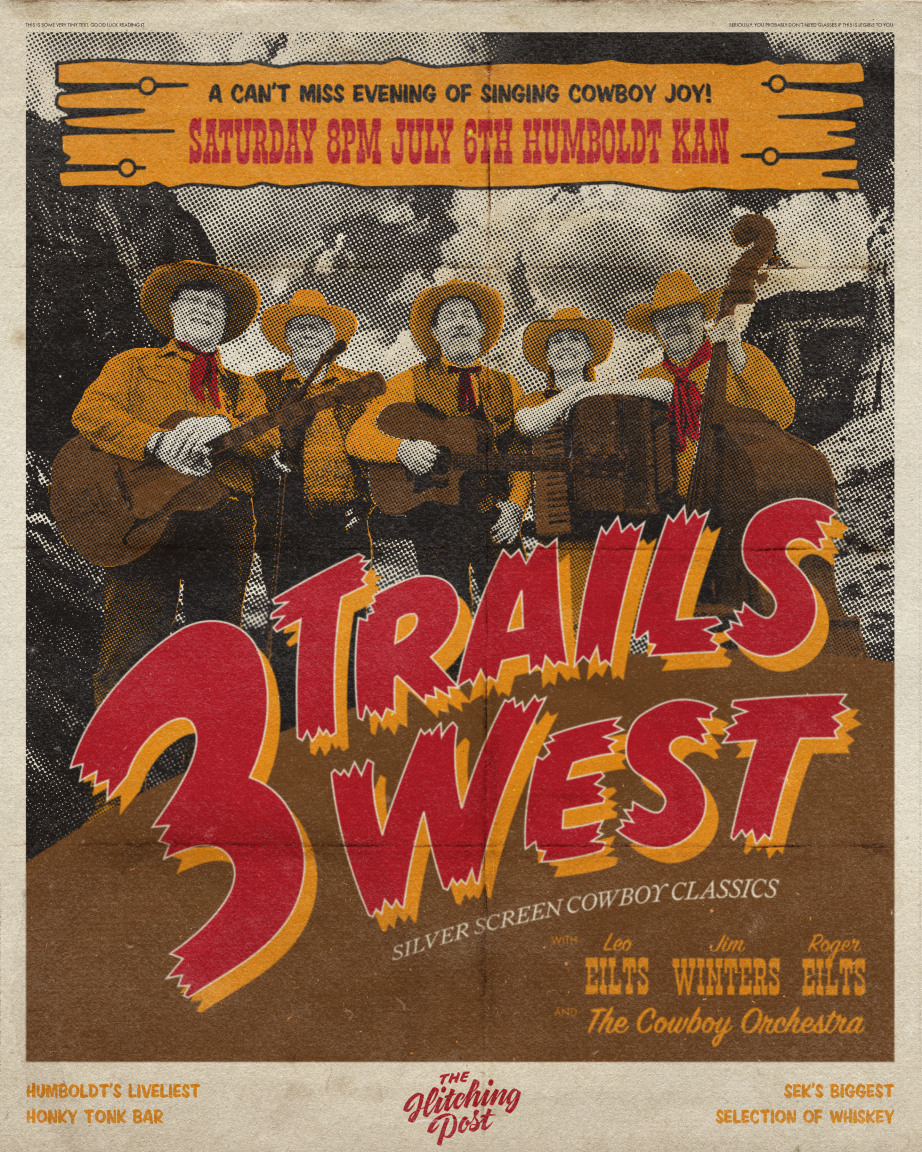
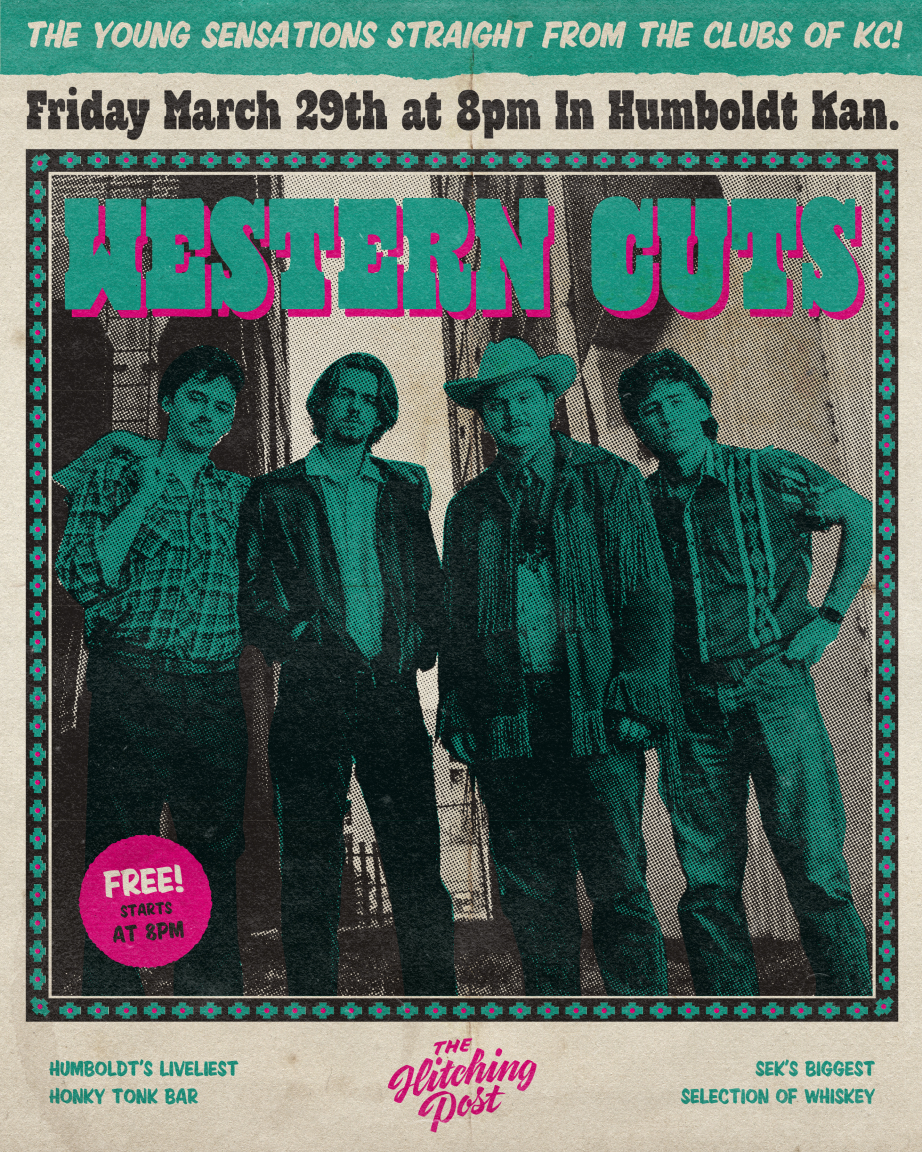

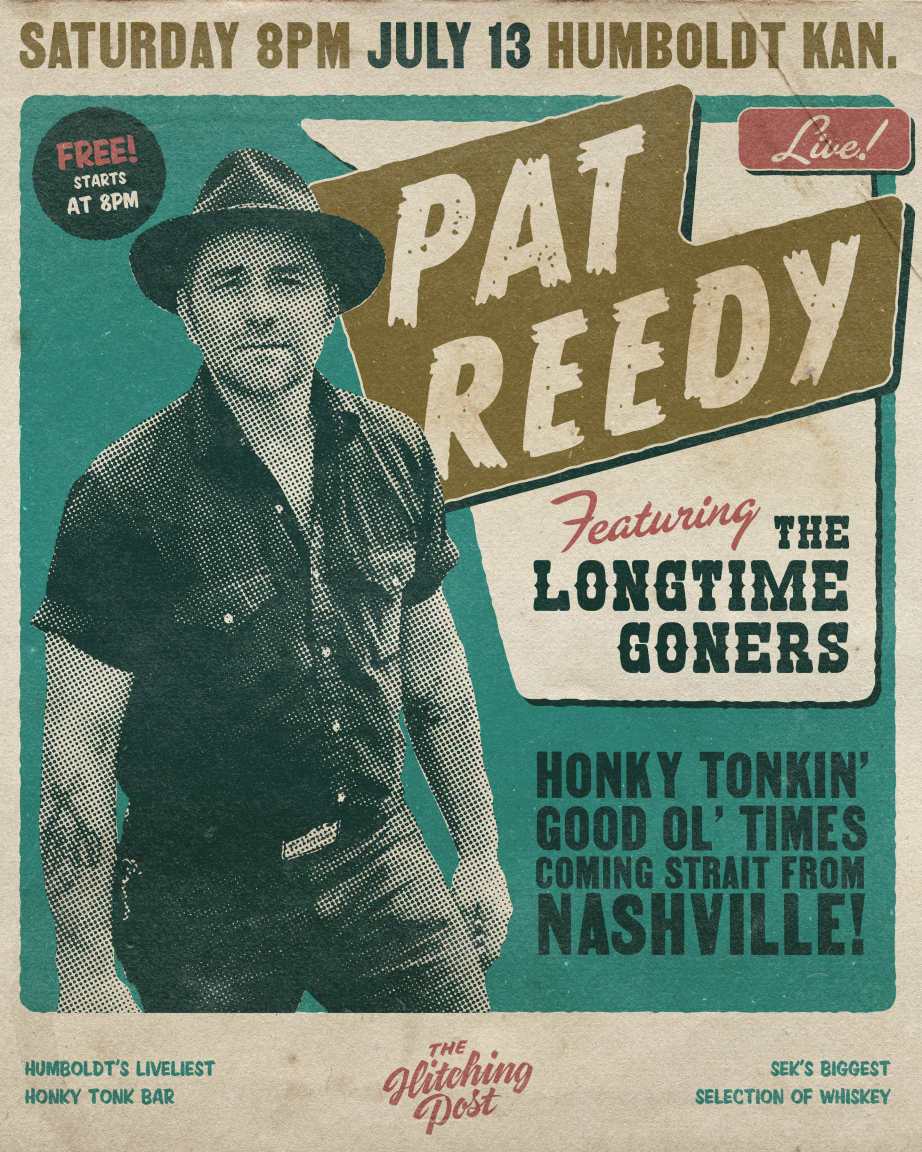

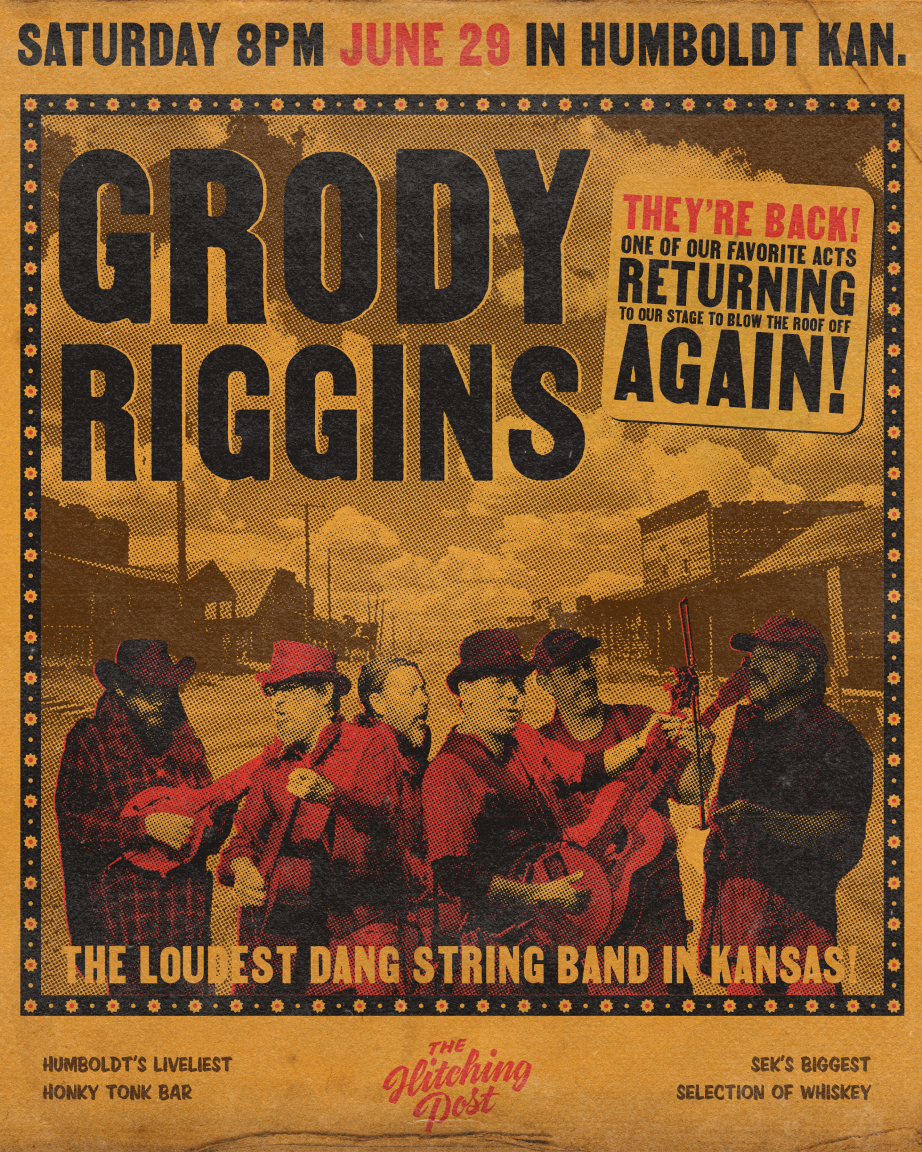
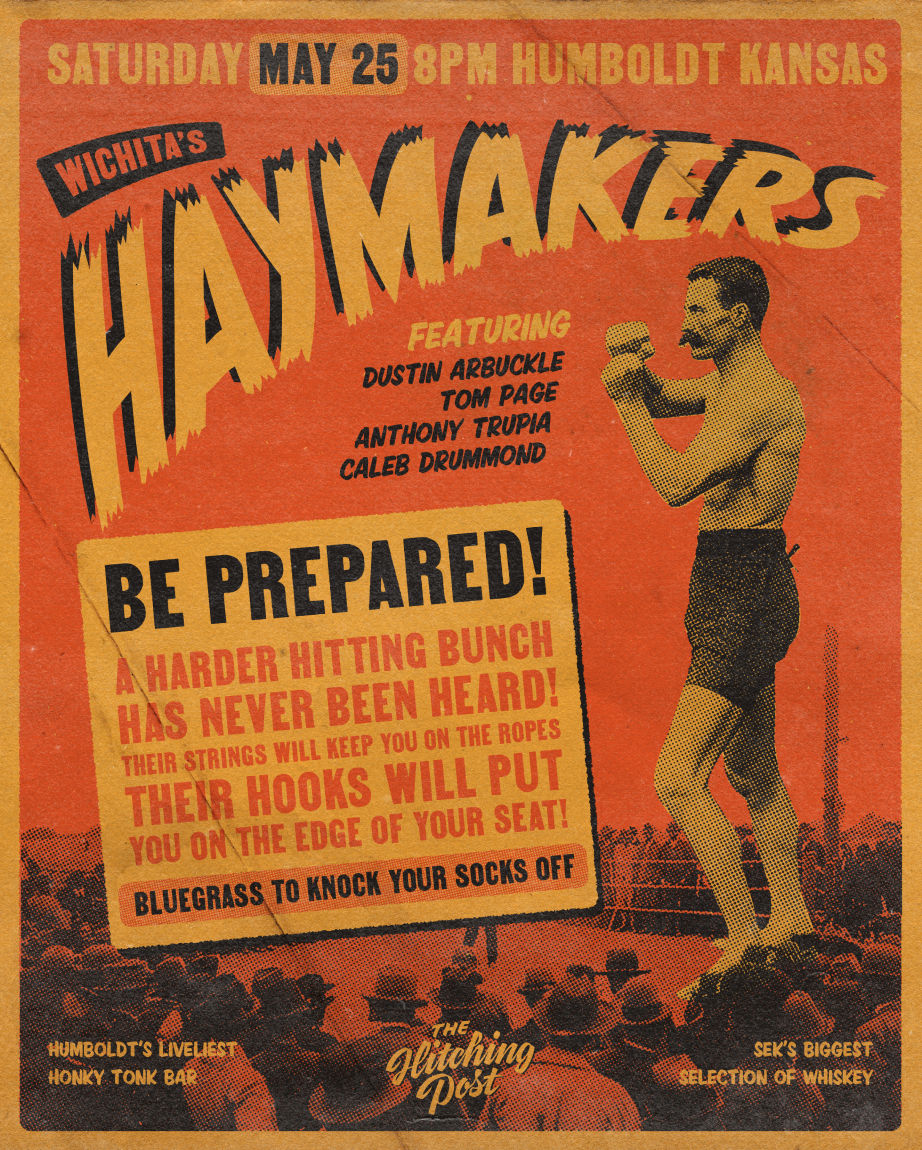
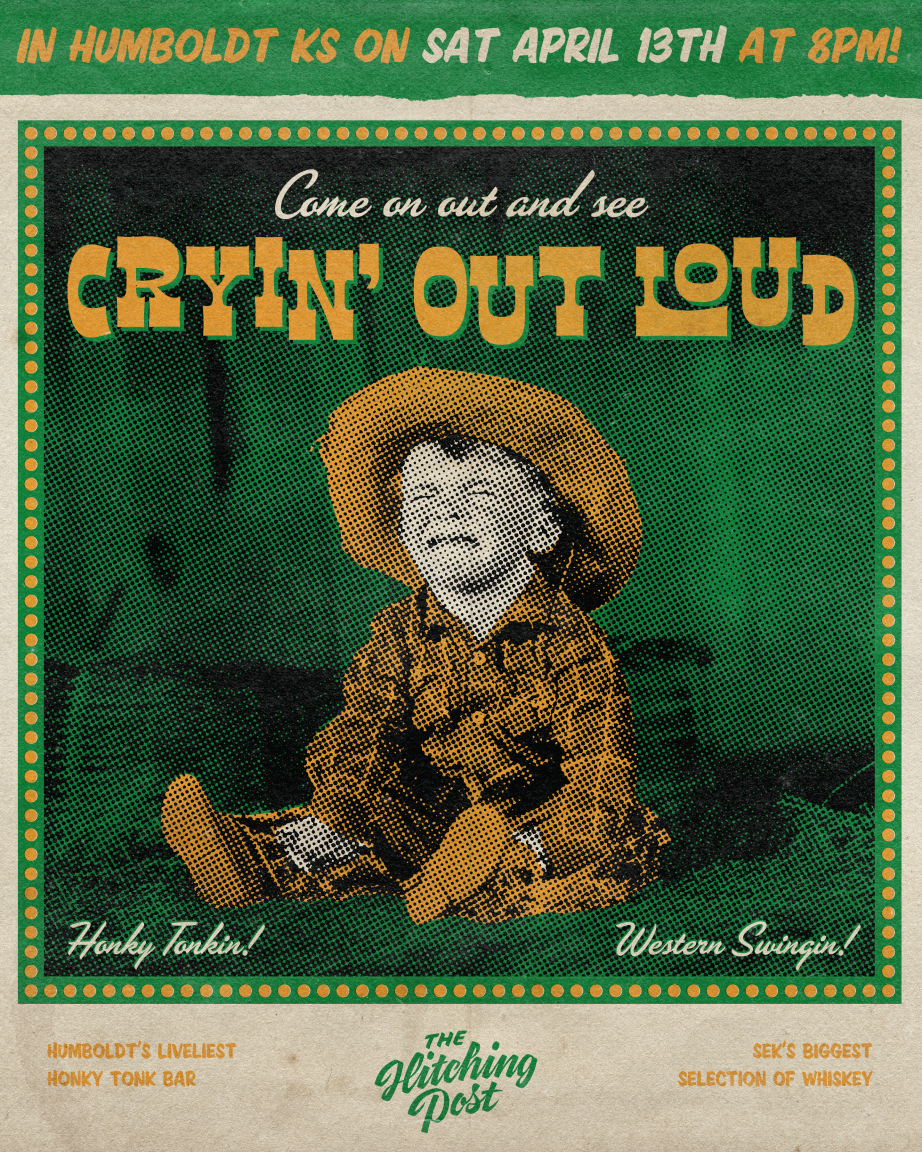
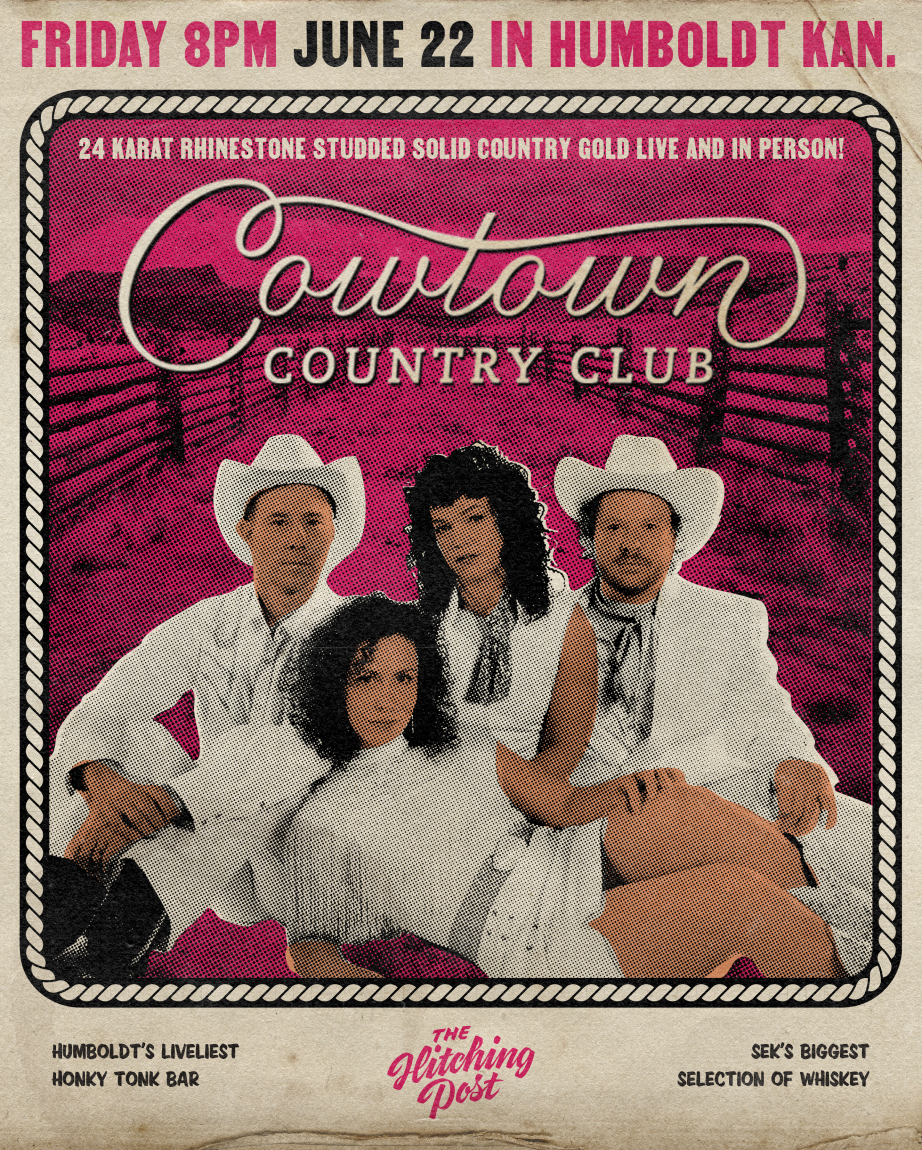
Rebuilding a music scene by creating a promotional series for concerts and regular events. Shown here are a selection of posters designed to fit the brand language of The Hitching Post bar

A common playbook for revitalization is tourism, but tourism–while very important–often misses what makes a place vibrant and real. Any revitalization effort can’t simply focus on visitors, and must provide opportunities for residents while making room for new residents.
Reasons to Visit
Converting to residency means building affordable housing, job opportunities, training, and quality schools.
Reasons to Move There
Affordable living, business opportunities, and quality of life
Reasons to Stay
And committing long term means making an emotional connection with strong community bonds, ongoing cultural offerings, and economic stability

An early lesson added into the toolkit has been what we termed the “lean-to business”. This is has meant placing a few ideas together under one roof to help prototype ideas before we spin them out into their own spaces with their own staff. Putting a local products mercantile in in the coffee shop allowed a certain amount of experimentation while leveraging the shared overhead, preexisting sales people, and the steady flow of traffic that otherwise might have been challenging. Or putting a small record shop in the book store that if successful can be spun out into its own space, and if not then it can just stay as a smaller “experience” in the book store.

One of the great challenges our civilization faces is an increasing feeling of distance from each other. The lack of “third spaces” where people of different types and backgrounds can gather has contributed to an increasing sense of loneliness and isolation. Rebuilding these gathering spaces is one of the most important efforts in this whole project. One of the very first steps of this project was to establish such a place in the form of a coffee shop (a coffee shop now spun out of its lean-to business model and called Octagon City Coffee). This space enabled local folks to “bump into” each other, provided a gathering place for meetings and a beacon to visitors that there was a “there, there” to meet the locals. Since then, the creation of the brewery, bars, restaurants and live music, has created a vibrant social scene in town attracting both locals and visitors alike. The palpable sense of activity–with groups of people bar-hopping and coming to town for dinner and music–on a weekend night is a radical shift from the previous emptiness.

As Humboldt's transformation gained momentum, it began to attract attention beyond its borders. In 2022, The New York Times named Humboldt one of "52 Places for a Changed World" recognizing its innovative approach to rural revitalization. Other notable recognition includes:
This recognition has brought new opportunities and challenges. Cole Herder, Humboldt's
City Administrator, reflected on the transformation in an interview with the Kansas City
Star: "The things that have happened in this town, I could never have dreamed of
it.”
U.S. Senator Jerry Moran awarded the effort with the Building Better Communities award in a speech on the Senate floor:

Humboldt, Kansas, is a success story. It demonstrates how teamwork, creative thinking, hard work, treating others with respect and caring about the future of our communities can make a positive difference for our state and entire country.

Humboldt's story offers valuable lessons for other rural communities facing similar challenges. Cloutier reflects, "What we've learned is that successful rural revitalization isn't just about economic development. It's about creating a sense of place, fostering community pride, and building an ecosystem where people want to live, work, and visit."

As Humboldt enters the next phase of its journey, the town stands as a testament to what's possible when visionary thinking meets strategic execution. Kansas Governor Laura Kelly praised the initiative, stating, "There's no better example of the growth and success we're seeing in Kansas than in places like Humboldt."
For Kei, the Humboldt project represents a new frontier in their work. "What we've done here goes beyond traditional consulting or design work," Cloutier concludes. "It's about reimagining what's possible for rural communities in the 21st century. And in doing so, we're not just changing one town – we're creating a model that could help revitalize rural America."